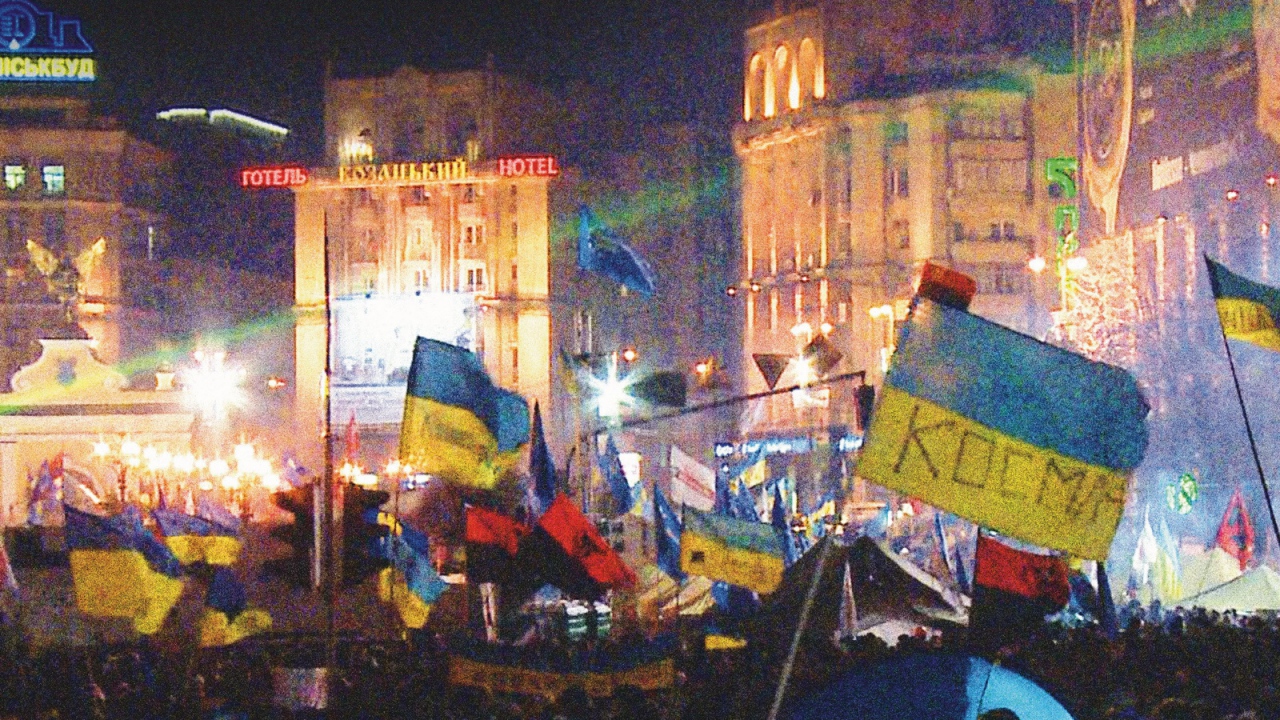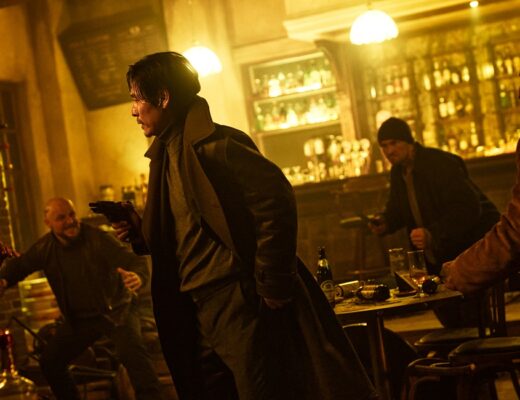It would be a mistake to overstate the similarities between the events presented in Sergei Loznitsa’s Maidan — a series of non-violent protests gone awry in Kiev, Ukraine, in 2013 — and the ugliness this year in Ferguson, Mo., but you would have to be blind not to be struck by them. Both situations were large-scale civilian revolts in metropolitan areas that ballooned into deadly confrontations with heavily militarized police forces, hurled tear-gas canisters and unreasonably threatening cop machinery featuring prominently. Violence erupted deep into the nights before sorrowful eye-of-the-storm days where the previous evening’s detritus made the cities look like battlefields. An ambitious, epoch-defining film on the still-in-many-ways-unfinished Ferguson tragedy has yet to arrive (though, given the proliferation of transmedia content during the fiasco, it wouldn’t be extreme to assume there was another Loznitsa out there in the crowd somewhere), but for Kiev, Maidan fills that role resoundingly.
Whether or not the ultimate Ferguson cinematic record does show up, it would be difficult to imagine any moving-image remembrance of it working through the lens of nationalism; more than anything, the Missouri events represent a total breakdown of the illusion of American democracy. In Maidan, on the other hand, Loznitsa creates a faithful portrait of an uprising simultaneously deeply patriotic and stirringly radical. The Kiev protests, which congregated in the titular town square in March, came about in response to the Viktor Yanukovych regime’s decision to freeze negotiations that would have formed stronger political ties between Ukraine and the European Union. President Yanukovych was siding with the authoritarian command of Vladimir Putin and effectively halting Ukraine’s ability to build its sovereignty from Russia. Such context, however, with the exception of a few sparingly expository title, has to be gleaned indirectly in Maidan, for Loznitsa’s focus is less on political nuances than the seismic ebbs and flows of a massive population stirred to collective action.
Befitting this group emphasis, Maidan limits its shooting range to wide and extremely wide. Loznitsa frames exclusively with telephoto lenses from considerable distances, a formal decision that’s both logistically sensible (taking a camera into some of this eruptive street combat might have been a death wish) and thematically appropriate, the resulting flattened perspectives rendering no man or woman more or less worth watching than any other. Shots run long enough to allow for gradual shifts in attention from, say, a cloud of smoke billowing across the frame to a guy rhythmically beating a trash can as if performing some manic ritual of chaos mongering — the immensity of visual detail recalling Jacques Tati’s urban comedies. Another layer of sensory surplus comes from the freely composed sound mix, which incorporates a multitude of atmospheric microphones, an effect subtle enough to go unnoticed. It’s hard to tell if all sounds at any given moment are synchronized to picture, but what Loznitsa sacrifices in aesthetic verisimilitude, he gains with a more complex integration of the seen and heard. Witness, for instance, the way in which a lone patriotic trumpet (presumably recorded at some point from a street musician) emerges mournfully from beneath the movie’s most hectic scene of battle. Or, for that matter, another contrapuntal pairing of the garbage-strewn square with a booming intercom voice-over offering the God-like reminder, “What does a man exist for? He exists for love.”
Loznitsa shows his Frederick Wiseman-esque skill in crafting narrative from months of observational footage and accumulating motifs in near-subliminal fashion.
Make no mistake: Maidan shows plenty of love too, but it’s an expression that turns from encouraging to melancholy over two hours. Before Yanukovych’s droogs hit the streets in its second half, the film coasts on egalitarian good vibes, surveying stations of camped-out activists, food shelters, a children’s choir performance, a fireworks ceremony and a mass singing of the national anthem, among other bits of upbeat rallying. Throughout, a chorus of common voices on- and offscreen extols the virtues of the Ukrainian motherland: its modest legacy, its core of Catholicism, its agriculture, its family principles, its longed-for political neutrality. (One particularly nostalgic speaker sounds as though he’s reciting a passage of screenplay from Andrei Tarkovsky’s The Mirror.)
All this concentration on merriment makes the eventual police interference especially distressing. Maidan’s descent into fiery, full-scale horror is swift and brutal, signaled by little more than an undemonstrative title card noting Yanukovych’s passing of anti-protest laws. The previously communal atmosphere is now overlaid with a sinister edge as rows of shielded riot-squad members encroach upon the square, compulsive corresponding force from the more-defiant civilians following not far behind. Explosions echo the fireworks from earlier, while a climactic group rendition of a Ukrainian folk song (captured in a composition that mimics the movie’s opening shot) delivers the final emotional gut punch. It’s in such structural reverberations that Loznitsa shows his Frederick Wiseman-esque skill in crafting narrative from months of observational footage and accumulating motifs in near-subliminal fashion.
As I write this, Ukraine is still feeling the repercussions of the Kiev protests. At this point, the boundaries between the country’s task force (no longer obeying an escaped Yanukovych) and the militant nationalists has blurred to such a degree that the conflict no longer comes across as vividly as it did during Maidan, but it’s a no less urgent problem facing the Ukrainian people. Prescient of this murkier stage of turmoil, Loznitsa visually orients the tragedies of the film’s second half as communal tragedies that do not exclude the police. It’s significant that, when a “berkut” — a local term for the special law-enforcement unit — gets injured while perched atop a roof, we don’t get to share in an onlooker’s overheard glee at the sight of it. Someone blocks the frame when the guy goes down, inadvertently emphasizing that this is not something to cheer on. As Maidan makes resoundingly clear, change is effected through sheer volume, and daily bloodshed does not a bigger crowd make. In the words of an impassioned speaker, “a nation without dignity is not a nation.”








No Comments